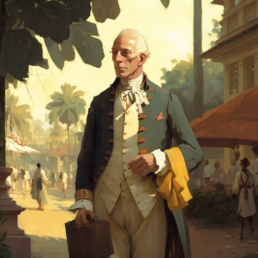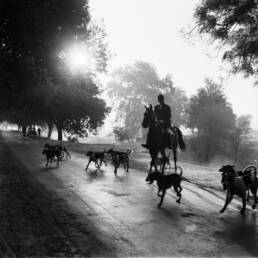Story by Munira Fatima (Follow her on Twitter @MuniraFatima_)
What does a B-Grade Bollywood horror movie from 1991 have in common with “Poor Things” – an upcoming, critically acclaimed Hollywood flick starring Emma Stone and Willem Dafoe?
In May 1991, a movie called “Khatra,” directed by H.N. Singh and starring Raza Murad and Goga Kapoor, was released. It told the story of a doctor who brings back a human to life with chemicals and electric shocks, but in the process, creates a monster who hunts and kills women.
The movie, with a runtime of 120 minutes, marked the debut of Aadesh Shrivasatava as a composer. He had worked with veterans like R.D. Burman and Rajesh Roshan and would go on to achieve massive success composing music for film’s like “Kabhi Khushi Kabhi Gham,” “Baghban,” “Raajneeti” etc.
The plot may have rung a bell for some of you: that is because “Khatra” was a loose adaptation of Mary Shelley’s “Frankenstein“ (1818), written when she was just 19 years old. It is widely considered the first work of science fiction written in the English language.
Born Mary Wollstonecraft Godwin, she was the daughter of two radical philosophers: Mary Wollstonecraft, the author of the trailblazing feminist text “A Vindication of the Rights of Woman,” and William Godwin, whose “An Enquiry Concerning Political Justice“ had garnered him fame.

The idea of “Frankenstein” was conceived on a dare. As Shelley puts it, during a vacation to Lake Geneva, Lord Byron asked his guests, including Mary and her husband, the poet P.B. Shelley, to write stories based on German horror. What followed gave birth to the prototype of the novel.
The novel tells the story of a scientist named Victor Frankenstein who attempts to create a human using dead body parts, which leads to disastrous consequences. Over its 200 year afterlife, “Frankenstein” has been adapted into countless forms – plays, movies, novels and even video games!
And these are just direct adaptations. Several works, over the years, have taken inspiration from elements of “Frankenstein.” One of them is Alasdair Gray’s “Poor Things,” set in Glasgow, which was published a year after “Khatra ” hit screens in India.
“Poor Things” centred on a woman whose brain is apparently swapped by a scientist. A movie based on the novel and directed by Yorgos Lanthimos will be released during the Venice International Film Festival in September this year.
While both the films take inspiration from the same source material, their plots are reversed. In “Khatra,” a man creates a monster who kills women because he is insane. In “Poor Things,” a monstress, on assuming sense, makes the men around her go insane.
And this doesn’t even begin to describe the extent to which “Frankenstein” has influenced media generation after generation. Since its publication over 200 years ago, hardly a decade has passed without at least one of its over 100 adaptations being produced in every other major language.
Although Shelley wrote a lot, nothing came close to the legacy “Frankenstein” enjoys. Some of her other works include “The Last Man” (1826), a controversial novella called “Mathilda” (1819), “Lodore” (1835) and “Falkner” (1837).
This year, August 30th marks the 226th birth anniversary of Mary Wollstonecraft Shelley. Today we celebrate her immense contribution to storytelling across all mediums and languages.
Sources:
- https://www.boxofficeindia.com/movie.php?movieid=6038
- “8 Classic Bollywood Horror Movie Posters”, published on 10 May 2011 https://www.koimoi.com/bollywood-news/8-classic-bollywood-horror-movie-posters/
- Emma Stone and Yorgos Lanthimos on Creating a Woman Free of Shame in Poor Things, by Emma Specter, published on 31 May 2023 https://www.vogue.com/article/emma-stone-yorgos-lanthimos-poor-things-interview
- https://www.poetryfoundation.org/poets/mary-wollstonecraft-shelley




